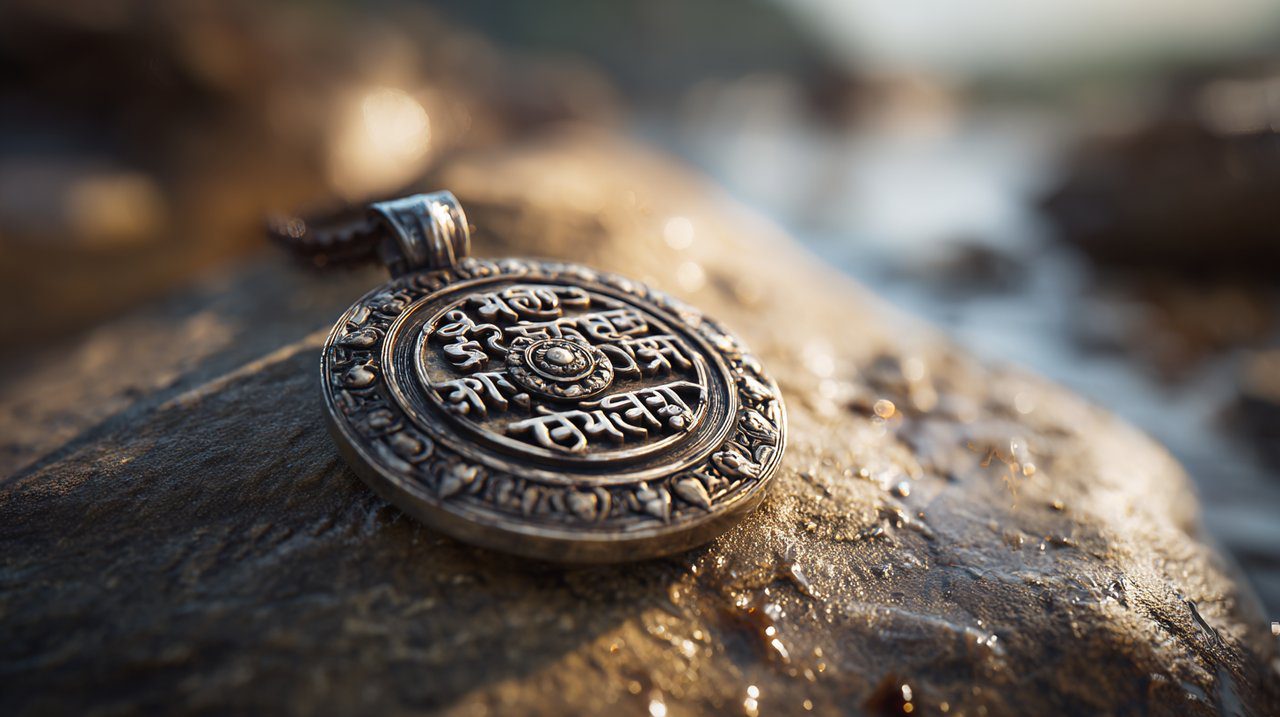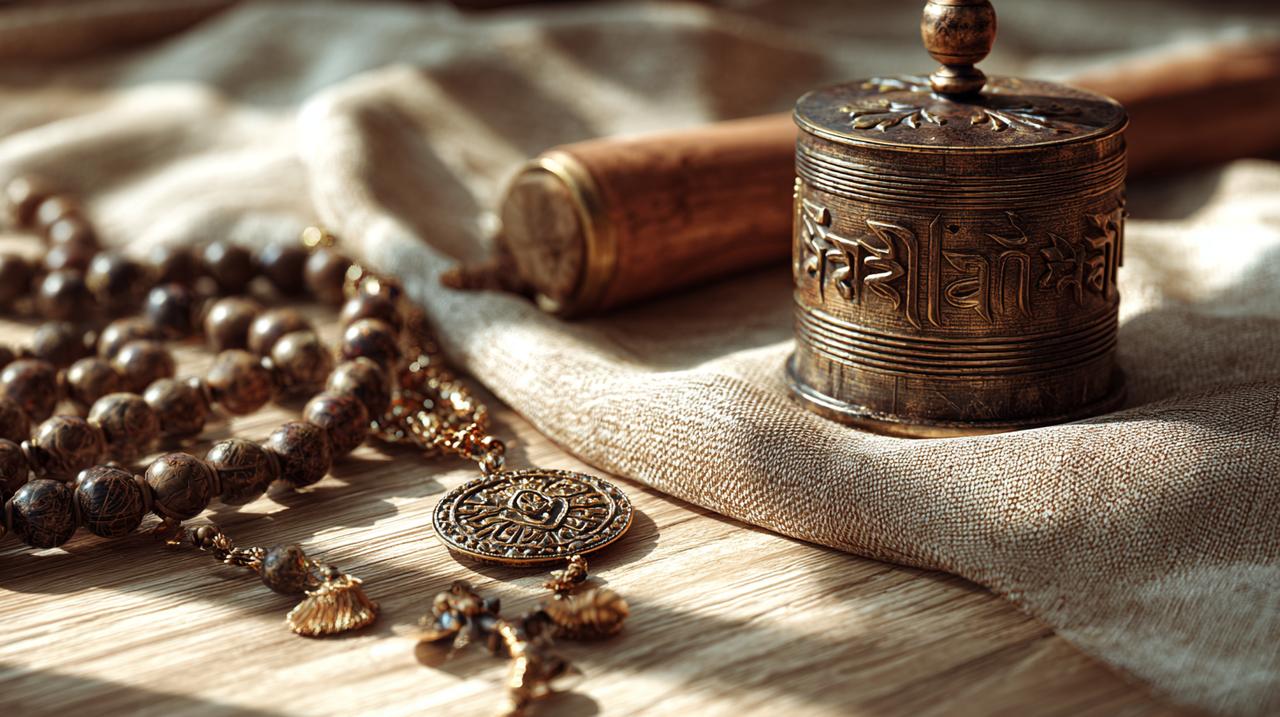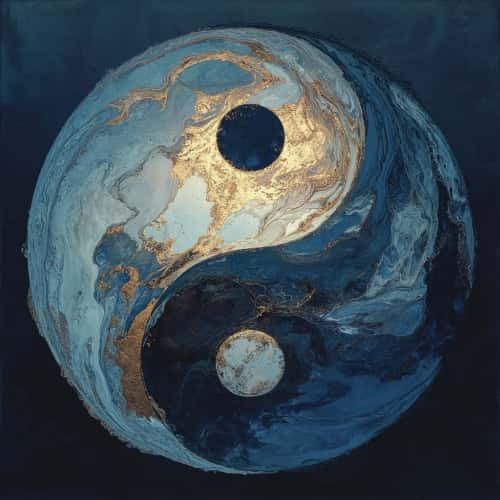Tibetan Mantras Pendants: A De-mystified Guide to Intentional Protection
Many of us look to talismans for a sense of spiritual protection. But what if their true power isn’t about some mystical force, but rather something deeply rooted in our own psychology and focused intention? Tibetan mantra pendants offer a truly fascinating way to explore this idea.
As a Feng Shui enthusiast, I’m always driven by the ‘why’ behind ancient practices, aiming to interpret this wisdom through a modern, rational lens.
In this discussion, we’re going to look at these sacred objects not as magical charms, but as powerful tools. Think of them as instruments of environmental psychology and positive suggestion. Our goal is to really grasp the mechanisms behind their protective and meaning-giving power, so you can choose and use them with clear, informed intention.

The Psychology of Symbolic Security
Our human story is incredibly rich with symbols, isn’t it? From the earliest cave paintings to the logos we see every day, we naturally infuse objects with deep meaning. This isn’t about blind superstition; it’s about a fundamental human need to find anchors in what can often feel like a very complex world.
Symbols as Mental Anchors
Think about a cherished family heirloom or even a simple “lucky charm.” Its true power doesn’t come from the object itself. Instead, it comes from the meaning and intention we consciously project onto it. These items become powerful psychological tools, offering us comfort, focus, and a sense of connection.
Tibetan mantra pendants work in much the same way. They act as tangible touchstones, grounding our deepest intentions and aspirations in a physical form.
Universal Needs, Tangible Tools
Across all cultures, humans share a universal desire for control and well-being. When we face uncertainty, it’s natural to seek out anything that offers stability or reassurance. That’s where a protective symbol, worn close to the body, becomes incredibly effective.
It serves as a constant, tangible reminder of your inner resolve and your desired state of being. It’s like having a personal, portable piece of ‘environmental psychology’ that quietly reinforces positive thought patterns throughout your day.
Mantras as Cognitive Architecture
Tibetan mantras are often seen as sacred words, but from a rational perspective, they’re so much more. They are carefully designed phonetic sequences, meticulously crafted to evoke very specific states of mind and intention. The true power, when we look past the mystical, lies in their profound cognitive and psychological impact.
The Focused Power of Sound & Repetition
Whether chanted aloud or repeated silently, mantras are essentially a form of focused meditation. The rhythmic repetition is key; it engages the mind, effectively reducing mental chatter and fostering deep concentration. This mechanism is quite similar to how modern mindfulness practices or positive affirmations achieve their effects.
Beyond that, the very vibrational qualities of the sounds can also subtly influence our physiological state, encouraging feelings of calm and clarity. It’s a holistic approach to mental well-being.
A mantra isn’t just a phrase; it’s a mental pathway, carved by repetition, leading to a desired state of being.
Visual Cues for Inner States: Script on Tibetan Jewelry
Now, when these powerful mantras are inscribed onto Tibetan jewelry, they take on another fascinating role: they become visual anchors. The intricate script, often Tibetan Uchen or Ume, isn’t just decorative; it acts as a constant, silent prompt for your mind.
Simply seeing the mantra can trigger the same positive psychological associations as hearing or chanting it. It’s a physical representation of an internal commitment, serving as a subtle ‘micro-meditation’ throughout your busy day.
The Mechanics of Intent: Pendants as Psychological Reinforcers
A mantra pendant isn’t just a passive shield you wear; it’s an active tool designed to engage your personal agency and reinforce your deepest intentions. Its true power lies in this dynamic interaction.
Activating Personal Agency
Wearing a mantra pendant can truly be a deliberate act of self-empowerment. It signals a conscious choice to align yourself with specific principles or intentions. This active engagement — the very act of choosing, wearing, and acknowledging the pendant’s meaning — significantly strengthens its psychological impact.
It subtly shifts your focus from seeking external protection to cultivating internal resilience. It’s a constant reminder of your own innate capacity for focus and strength.
Cultivating Inner Strength Through Practice
The principles at play with mantra pendants resonate deeply with other intentional practices. Think about mala beads, which are used to count mantra repetitions, or even Tibetan prayer wheels, which symbolically ‘spin’ mantras into the world.
Both are powerful tools that leverage repetition and focused intention to cultivate specific inner states. A pendant embodies this very same spirit; it’s a condensed, portable form of these practices, offering a constant, silent reminder of your chosen path and mental anchors, steadily building inner fortitude over time.

Intentional Engagement: Selecting Your Personal Mantra Pendant
Choosing a mantra pendant is a deeply personal journey, much like finding the right mentor or a meaningful book. It’s all about discovering a symbol that truly resonates with your unique intentions and personal psychological needs.
Matching Message to Mindset
Different mantras inherently carry distinct meanings and energetic qualities. For example, the well-known Om Mani Padme Hum is widely associated with compassion and wisdom, while other mantras might focus on healing, protection, or personal growth.
Taking the time to research the specific meaning of various mantras allows you to select a pendant that genuinely aligns with your current life goals or your desired mental state. This informed and conscious choice significantly amplifies the pendant’s psychological effectiveness as a powerful personal anchor.
Shared Human Threads: Global Symbols of Focus
The intentional act of wearing a mantra pendant actually parallels the psychological function of many other symbolic pieces of jewelry found across the globe. Take an evil eye bracelet, for instance. It’s often worn to ward off negative energy, but its true power likely lies in the wearer’s profound belief in its protective qualities, which in turn fosters confidence and peace of mind.
Similarly, when we understand the meaning behind a red string bracelet, we uncover a universal human desire for connection and protection, expressed through a simple, tangible symbol. These diverse cultural symbols, despite their varied origins, all tap into our fundamental psychological need for focus, intention, and a concrete representation of our inner world.
So, as we’ve explored, Tibetan mantra pendants are far from being just mystical objects. I see them as sophisticated tools designed for personal growth and psychological well-being. Their power isn’t solely in ancient tradition, but in their remarkable ability to serve as potent psychological anchors.
They help us focus our intentions and cultivate inner resilience, all through a beautifully de-mystified lens of wisdom. What I’ve truly found is that genuine spiritual protection comes from an active, intentional engagement with symbols that empower your own mind.
Ready to discover how these intentional pieces can support your unique journey? I encourage you to explore the diverse world of Tibetan jewelry and find a symbol that deeply resonates with your personal quest for mindful living and inner strength.
💡 Häufig gestellte Fragen
Tibetan mantra pendants are viewed as sophisticated tools that leverage environmental psychology and positive suggestion. Their protective power stems from the meaning and intention projected onto them by the wearer, acting as tangible touchstones and psychological anchors that reinforce desired states of mind and inner resilience.
From a rational perspective, Tibetan mantras are carefully designed phonetic sequences that have a profound psychological impact. Their rhythmic repetition, whether chanted or silent, engages the mind, reduces mental chatter, and fosters deep concentration, similar to mindfulness practices or positive affirmations. The sounds' vibrational qualities can also subtly influence physiological states, promoting calm and clarity.
When mantras are inscribed onto Tibetan jewelry, the intricate script serves as a visual anchor. Simply seeing the mantra can trigger the same positive psychological associations as hearing or chanting it. This physical representation of an internal commitment acts as a subtle, constant prompt or 'micro-meditation' throughout the day.
Wearing a mantra pendant is an active act of self-empowerment. The deliberate choice to wear and acknowledge its meaning strengthens its psychological impact, shifting focus from external protection to cultivating internal resilience. It serves as a constant reminder of the wearer's own innate capacity for focus and strength, steadily building inner fortitude over time.
Choosing a mantra pendant is a personal journey to find a symbol that resonates with unique intentions and psychological needs. Different mantras carry distinct meanings (e.g., compassion, healing, protection). Researching these meanings allows for an informed choice that genuinely aligns with current life goals or desired mental states, significantly amplifying the pendant's psychological effectiveness.








